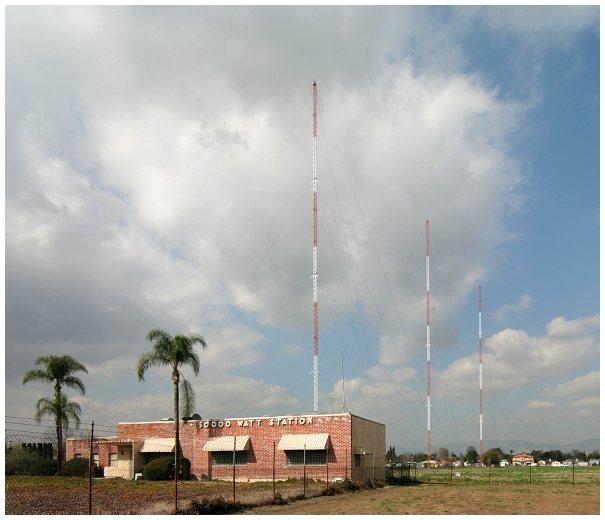The quaint scene pictured below symbolizes a technology and platform that has served radio so well since its very beginnings. You were granted a license and then went about building the infrastructure that would guarantee coverage and reach. Acquiring a plot of land, erecting a tower, buying and installing a transmitter – all the costs of doing business in the early years of radio.
All of this promised simplicity…and profits. Of course, you needed engineers and ongoing maintenance. But you were comfortable with the knowledge that every radio manufactured and sold moving forward – tube-type, transistor, Walkman, boom box, Delco, Motorola, Heathkit – easily and seamlessly received your signal and delivered your content – at no charge to consumers. And with a business model promising scarcity of frequency space and barriers to others entering the industry, radio was a simple, scalable, successful business proposition.
Enter Reach 2.0.
The good news is that the smartphone and the connected car offers an open door for radio. But it’s far more complicated than the simple transmitter and tower model.
Until last week’s announcement at CES, access to Ford’s SYNC platform wasn’t democratic. It was dominated by the major streaming players – Pandora, iHeartRadio, NPR, and others. Now, Ford is making it easier than the FCC does to acquire a broadcast license. Any and all radio and Internet stations now have access to this important new distribution model in cars.
And unlike these aforementioned mega-brands, individual radio stations that have developed mobile apps can provide an expanded user experience, featuring multiple streams, access to podcasts, and ultimately, much more via voice commands in the dashboard.
The payoff is that radio brands of today will have a next life everywhere there’s the ability to enjoy audio entertainment. We reported on the “Gadget Graveyard” contest that the IEEE was running at CES. I fortunately left Las Vegas before the results were announced, but “radios” were right near the top. Now they weren’t killing “radio, the industry,” but the obvious feeling among many was that the “radio” – that familiar, standalone gadget that once occupied several rooms in the homes where we grew up are on the endangered hardware list.
And that leads us to the car – a major source of broadcast radio consumption, not to mention a primary spigot of advertising support. In order to achieve maximum reach in vehicles – with a user interface on par with SiriusXM, Pandora, and iPods – there is now a new price to be paid. The good news is that it’s accessible to all radio stations, and it’s less expensive than what radio’s original owners paid for their transmitters and towers.
As we’ve learned with the smartphone space, Apple and Google don’t hang out together. They’re involved in a mega-struggle for dominance. Therefore, iOS and Android have split the industry. Unlike VHS and Beta, chances are good there won’t be a dominant platform anytime soon.
So do you need to develop mobile apps and resources for both Apple and Android phones? Yes.
And now as we move into the car, Ford’s AppLink has become the first pathway where anyone and everyone can develop apps for their SYNC-enabled vehicles.
But even if you adapt your apps to be compatible with Ford’s voice commands, you will still want the opportunity to develop apps for the other automakers’ systems. Ford is the innovator in this space, but based on what we saw at CES, the other carmakers will ultimately open their systems to accepting outside apps as well. And so in order to enjoy distribution with all these automotive brands, radio companies will more than likely have to repeat this process several times. For all their brands.
That’s Reach 2.0, and it’s not going to be as seamless or as easy as it was in the transmitter and tower age.
But ultimately, the costs will be less and the rewards could be greater. Reach 2.0 is table stakes for radio. We should be thankful that as Best Buy clears its shelves of the last table radios and Walkmans, there are incredibly cool gadgets that everyone is salivating over that will provide distribution outlets for broadcast radio stations.
Earlier this month, the Silicon Alley Insider published a chart predicting that smartphones will reach 80% penetration in the U.S. by August 2014. You read that right. A mere 18 months from now. This is the same guy – Asymco’s Horace Dediu – who already correctly called the 50% level, and he believes that your Aunt Martha and the 10-year old neighbor kid will both be sporting smartphones of one kind or another by late summer of next year.
It’s moving faster than we think.
Broadcasters are going to need strategies to deal with, pay for, measure, and monetize these new platforms of consumer reach and consumption.
And don’t get me started about the critical importance of brand building and compelling radio content in Reach 2.0. That’s an important discussion but for another day.
For right now today, Reach 2.0 is going to be a reality before we know it.
Tomorrow, we’ll take a look into how Pandora has approached “strategic reach.”
Ford’s SYNC™ AppLink Developer Program has been named “Best in Show – Automotive” at CES 2013 by Engadget.
- What To Do If Your Radio Station Goes Through A Midlife Crisis - April 25, 2025
- A 2020 Lesson?It Could All Be Gone In A Flash - April 24, 2025
- How AI Can Give Radio Personalities More…PERSONALITY - April 23, 2025






Leave a Reply